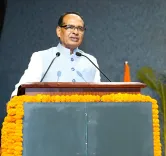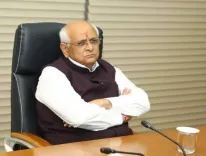Did the Maha Cabinet Approve an Increase in Allowances for Tribal Students in Hostels?

Synopsis
Key Takeaways
- Increased allowances: Food and subsistence allowances for tribal students have been significantly raised.
- Support for education: The government aims to facilitate higher education opportunities for Scheduled Tribe students.
- Impact of inflation: Allowances were revised considering the inflation index.
- Hostel capacity: Maharashtra has 490 hostels accommodating a large number of students.
- Koyna Dam project: Funding for the hydropower project is intended to enhance irrigation and energy generation.
Mumbai, June 24 (NationPress) The Maharashtra Cabinet, led by Chief Minister Devendra Fadnavis, has recently sanctioned an increase in food, subsistence, and educational material purchase allowances for tribal students residing in government hostels throughout the state.
"To facilitate Scheduled Tribe (ST) students in pursuing higher education away from their villages, government hostels operate at divisional, district, taluka, and rural levels across the state. The decision to adjust the rates of these allowances was made in light of the inflation index, as tribal students in hostels had not seen any increase in recent years. As a result, they will now receive enhanced financial support in accordance with the revised rates," stated the state government.
The monthly subsistence allowance has been raised to Rs 1,400 from Rs 800 at the divisional level, Rs 1,300 from Rs 600 at the district level, and Rs 1,000 from Rs 500 for rural and taluka levels.
An additional subsistence allowance for girls has also seen an increase from Rs 100 to Rs 150.
The annual Educational Material Purchase Allowance has been boosted to Rs 4,500 from Rs 3,200 for classes 8 to 10, Rs 5,000 from Rs 4,000 for classes 11, 12, and diploma courses, Rs 5,700 from Rs 4,500 for degree courses, and Rs 8,000 from Rs 6,000 for medical and engineering courses.
The monthly food allowance has risen to Rs 5,000 from Rs 3,500 for hostels situated in municipal and divisional cities, and Rs 4,500 from Rs 3,000 at the district level.
Currently, there are 490 hostels in the state, comprising 284 for boys and 206 for girls, with a total capacity of 58,700 students.
The government anticipates that these increased allowances will aid in simplifying the educational journey for Scheduled Tribe students, as mentioned in the statement.
In other news, the state Cabinet has approved a provision of 862.29 crore 29 lakh rupees for the Koyna Dam Base Power Plant (Left Bank) Hydroelectric Project.
The original intent of the Koyna dam was to supply 30 TMC of water for irrigation in the eastern region and an additional 20 TMC for various lift irrigation schemes under the Maharashtra Krishna Valley Corporation, alongside generating extra electricity during peak demand.
However, in 2023, the state government established a policy for the development of pumped storage hydropower projects, solar, and other non-conventional hybrid projects through public-private partnerships.
A memorandum of understanding has now been signed to collaboratively develop this project with Maharashtra Krishna Valley Corporation and Mahanirmiti company.
Of the Rs 1,336.88 crore needed for the hydropower project’s development, the first revised administrative approval has been granted for Rs 862.29 crore.
The remaining funds will be allocated to irrigation initiatives.
This project intends to release 20 TMC of water for the Tembhu, Krishna Koyna Lift Irrigation Scheme (Takari-Mhaisal) while generating electricity.
Overall, the project is expected to produce 277.82 million units of electricity.








